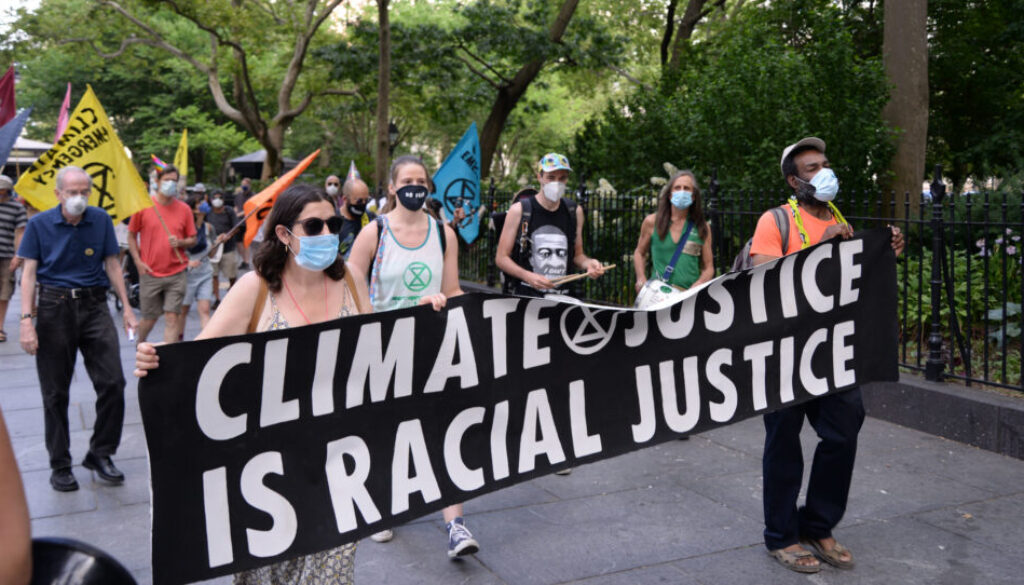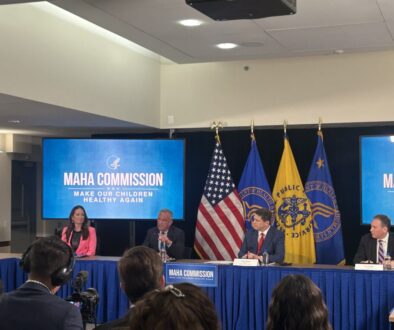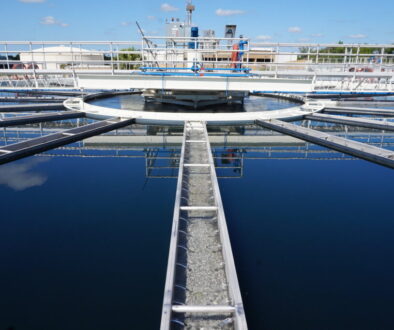EPA announces $100 million in historic funding for environmental justice
The United States is allocating about $100 million in grant funding to aid communities struggling with polluted air, unsafe drinking water, and climate change impacts in a move that marks the Environmental Protection Agency (EPA)’s largest-ever investment in environmental justice.
“For decades, too many communities, particularly low-income communities and communities of color, have borne the burden of climate and environmental pollution,” EPA Administrator Michael Regan said in a press briefing Tuesday. “We also know that too many of these communities have faced barrier after barrier trying to access the federal funds they need and deserve. This administration has committed to putting an end to that injustice.”
The EPA plans include providing funds for state and local governments and tribes to use in collaboration with community organizations to address environmental and/or public health issues at the local level and to develop tools and processes that integrate environmental justice considerations into government programs. Funds will also be given directly to community-based organizations.
To be considered for funding, applicants must submit proposals by April 10. Regan expects applicants awarded grants to receive their funding by this fall.
“I’m really excited that that amount of money has been allocated,” said Mildred McClain, executive director of the Harambee House nonprofit in Savannah, Georgia, which focuses on improving environmental conditions in African American communities. “It’s a good start. But of course I would say from a community standpoint that we need much, much more.”
Regan acknowledged that the $100 million is only a fraction of the $3 billion allocated for environmental and climate justice block grants authorized under the Inflation Reduction Act (IRA), and said to “stay tuned” for “additional grant opportunities in the months to come.”
Power to shift paradigms
Catherine Flowers, founder of the Center for Rural Enterprise and Environmental Justice, applauded the move to empower environmental justice communities through direct funding.
“I firmly believe many solutions to our environmental crises in this country lie at the community level,” Flowers said in the press call. “People in the environmental justice community often know what’s best. They don’t always have the resources or the voice.”
“I have sincere optimism that funding like this has the power to shift paradigms to people living in impacted communities to being game changers for us all,” she added.
Allowing people to apply for funding from the local level can avoid the “political posturing” that has prevented past efforts from coming to fruition, according to Harold Mitchell, a former South Carolina state representative and founder of the ReGenesis Institute environmental justice organization. He added that the funding offers communities a chance to provide “real, transformative solutions.”
“This would be huge leverage for communities to get projects completed, started, and come up with the plans to transform a lot of the legacy problems people have been fighting for decades,” Mitchell said.
Mitchell grew up in Arkwright, a small, predominately African American community in southside Spartanburg, South Carolina. For decades, the neighborhood was marred by a legacy of pollution from textile mills and other industrial facilities. In 1998, Mitchell founded ReGenesis to address concerns about exposure to hazardous waste and chemical manufacturing plant toxins, as well as inadequate healthcare. With funding from the EPA and other government agencies, Mitchell’s organization has worked to clean up heavily polluted sites in Spartanburg, South Carolina, reducing pollution and improving the community’s health.
Further government funding, such as the newly-announced EPA grants, could help finance ambitious projects ReGenesis plans to move forward, including a community solar project that would power a chemical plant, an aquaponics facility that would provide organic produce for healthcare patients, and a garment recycling facility that would repurpose old clothing.
Giving residents a voice
When the Georgia-based Harambee House received two EPA grants in the early 2000s, McClain saw firsthand how government funding can empower communities burdened by pollution. She said the grant money allowed her organization to work with communities on the west side of Savannah at the mouth of the city’s port, which is a source of ongoing air quality issues. Leveraging these resources, Harambee House has helped residents develop partnerships with nearby industries and the Georgia Ports Authority to address its air pollution problems.
“Often the universities and the government feel like they have to come in and tell the community everything,” said McClain. “With that grant, we turned that model around. Residents found their own power to be able to guide the discussions, to be able to call certain folks to the table, and to be able to participate actively in developing plans for community development and to address the environmental issues identified by residents.”
“For those communities that end up getting [the grants], we can say from experience it will be very, very useful,” said McClain, adding that her organization plans to apply for grant money and will encourage other communities to form partnerships and apply as well.
“It would allow us to further implement the work that was started back then,” she said. “Significant progress has been made but not enough on the issue of reducing pollution.”
(Featured Image: Marchers in New York on June 26, 2020, press for a response to climate change and racial injustice. Photo by: Felton Davis, Flickr Creative Commons.)





January 14, 2023 @ 12:31 am
Thanks EPA for splurging.
One Marine Corps F-35B costs an unbelievable $251 million. A lone Navy F-35C costs a mind-boggling $337 million.